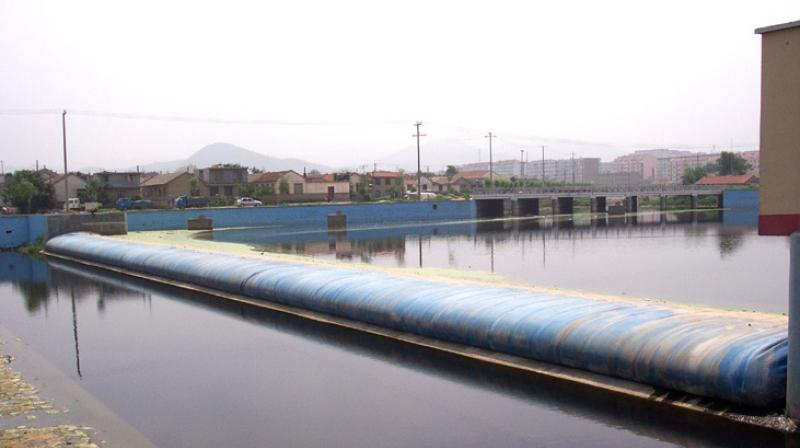South India's first rubber check dam in Ooty

OOTY: Rubber check dam, the first of its kind in South India, comes up across Sillahalla stream at Balacola near Ooty as Indian Institute of Soil and Water Conservation (IISWC), Regional Centre at Ooty and the Indian Institute of Water Management(IIWM) at Bhubaneshwar, joined hands to bring the new millennium innovative technology for water shed management in the hills.
Dr S. Bhaskar, assistant director, General, Natural Resource Management Division, ICAR, New Delhi, who inaugurated the first rubber-check dam in south India on Thursday, said that check dams are engineering measures which are mainly used for soil and water conservation in watershed management.
“A rubber dam or flexible check dam is an inflatable structure build across a stream used for water conservation, flood control and regulating flow of water in the stream. When it is inflated, it serves as a check dam /weir and when it is deflated it functions as a flood mitigation device and sediment flushing. The head or height of the rubber dam is variable. According to the requirement, its height can be increased or decreased. This variable head also regulates the depth of
flow in the diversion channel for irrigation present in the upstream side of the check dam,” Dr Bhaskar explained.
Dr S.Manivannan, principal scientist at IISWC-Ooty said, “as an innovative hydraulic structure, the rubber dam mainly consists of four parts, including a concrete foundation with head wall extension, side wall and wing wall of normal check dam, anchoring mechanism to anchoring of rubber sheet with bottom and side of the check dam, and an inlet/ outlet piping system for the inflation and deflation by water”.
The main advantages of a rubber dam is its ability for better soil erosion control and flood control during excess runoff water flow. It also acts as a dam/ reservoir for storing water during scanty rainfall period (dry spells) so that supplemental irrigation can be provided to the crops, he pointed out.

